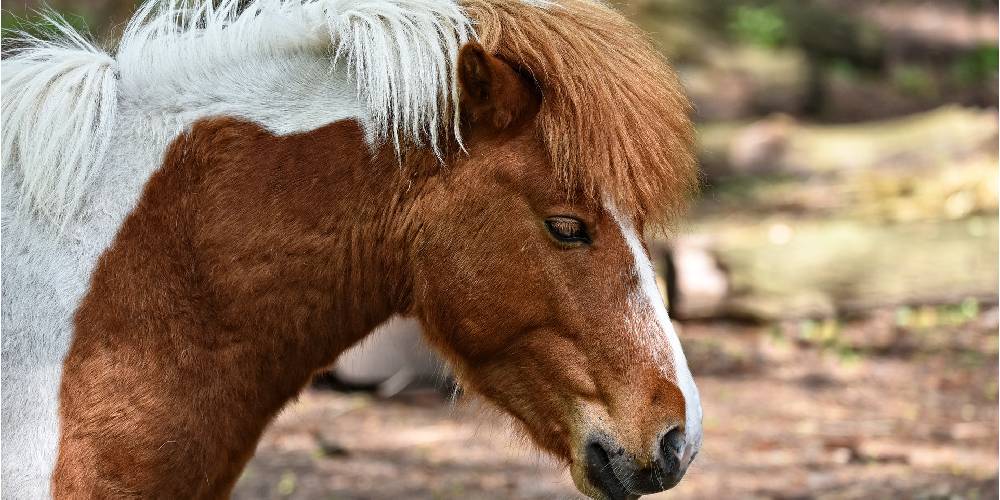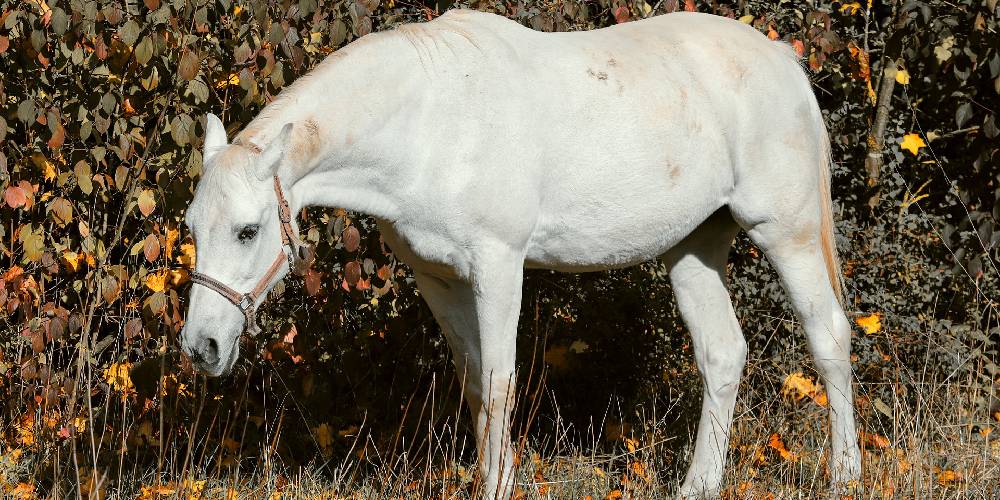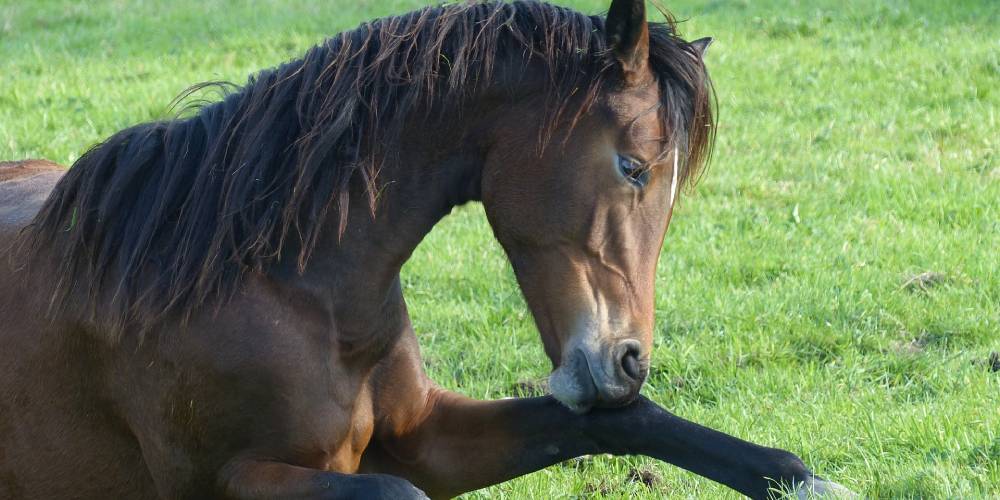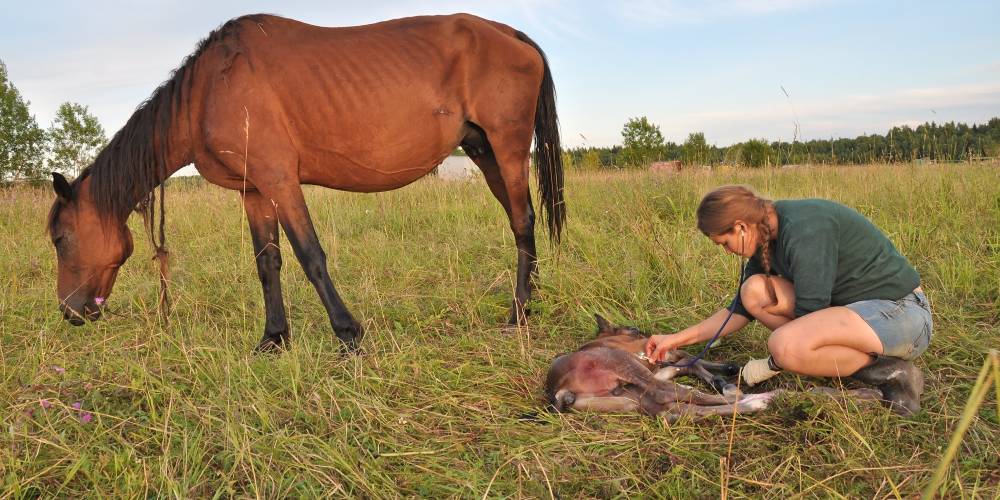Knowing the normal body temperature of a horse is very important. Why though? This information could help you to get the important medical treatment your horse needs sooner by identifying a fever or chill in your horse and getting a veterinarian out as soon as possible. I put together this post in hopes to teach you all you need to know about your horse’s temperature.
What Is A Horse’s Normal Body Temperature?
The normal body temperature for an adult horse is quite high compared to the normal body temperature for us humans. The normal body temperature for an adult horse stands anywhere from 99 to 101.5 degrees Fahrenheit (37.2 to 38.6 degrees Celcius). If an adult horse has a temperature of one degree Fahrenheit (.5 degrees Celcius) over or under this temperature, a veterinarian should be called as the horse is likely sick.
What Would Be Considered A Fever To A Horse?

For a horse’s temperature to be considered a fever, its temperature must be at least one degree Fahrenheit (.5 degrees Celcius) over the horse’s normal temperature. This means that for an adult horse, the horse’s temperature must be 102.5 degrees Fahrenheit (39.1 degrees Celcius) or higher to be considered a fever.
What Would Be Considered Hypothermia To A Horse?
For horses, any drop below the lowest normal body temperature is considered a case of hypothermia. This means that if a horse has a temperature of anything below 99 degrees Fahrenheit (37.2 degrees Celcius), they are in a state of hypothermia and need medical attention as soon as possible to bring their body temperature back up to a more healthy number.
How Do I Check My Horse’s Temperature?
For us humans, we check our temperature under our arm, under our tongue, on our forehead, or on our wrist. With horses, the place where we check their temperature is a little more… up close and personal let’s say.
To check the horse’s temperature you will need a few things:
- A horse (obviously)
- A lubricant of some sort (vaseline, petroleum jelly, or your own saliva all work)
- A thermometer (how else would you check their temeperature?)
Once you have all of these things, it is now time to check your horse’s temperature.
Step 1: Make Sure Your Themometer Works & Is On
Depending on what kind of thermometer you are using, these steps won’t fully match every type of thermometer out there. If you are using a mercury-based thermometer, you don’t need to follow this first step. If you are using an electronic thermometer, you need to follow this step.
Make sure that your thermometer is on and is ready to go. If you are using an electronic thermometer that has a screen, the screen should show some sort of indication that the thermometer is on and is ready to go.
Step 2: Lubricate The End Of Your Themometer
Make sure that the end of the thermometer that you are inserting into the horse is fully lubricated. If it is not fully lubricated, then you may come across some issues inserting the thermometer and if you are using a mercury-based thermometer, it may even be at risk of breaking if it is not properly lubricated.
Step 3: Insert The Themometer Into Your Horse’s Rectum & Take Their Temperature
This is the strange part of taking a temperature from a horse. You will now insert the lubricated end of the thermometer into the horse’s rectum and hold it there until the correct temperature is read.
If you are using an electronic thermometer, it usually takes around 30 seconds to get a temperature reading in. If you are using a mercury-based thermometer, it may take a few minutes to get an accurate reading in.
Step 4: Determine If The Temperature On Your Themometer Is A Normal Healthy Temperature
Now that you have your horse’s temperature, it is time to determine if it is a healthy temperature or not. If your horse has a normal temperature, then you should be fine to leave your horse as it is (unless it is showing signs of distress or illness).
If your horse has a temperature below normal, then call your veterinarian and try to bring your horse to a warm area and blanket them while you wait for your vet to arrive on the scene.
If your horse has a temperature that is too high, bring your horse to a cool area and wait for your veterinarian to arrive to take over.
Signs Of A Fever In Horses

Other than having a high temperature, a horse that has a fever will generally show some symptoms indicating its situation. These symptoms can include:
- Loss of appetite
- Weariness
- Low hanging head
- Profuse sweating
- Abnormal behavior
- Obvious discomfort
- Symptoms from another illness or issue that may be causing a fever
- Unfocused ears
- Unfocused eyes
If you see your horses behaving unlike themselves in any way or displaying any of the symptoms I just mentioned, make sure to check your horse’s temperature and call your veterinarian to make sure any issues are taken care of as soon as possible.
Signs Of Hypothermia In Horses

Just like when dealing with a fever situation, horses who are suffering from hypothermia display certain symptoms that may point to hypothermia. Some of these symptoms can include:
- Shivering
- Dehydration
- Super fast, super slow, or irregular heartbeat
- Dark urine
- Recumbency
- Weariness
- Lying down for extended periods of time
If your horse is showing any of these symptoms, check your horse’s temperature and call your veterinarian right away if your horse has a temperature that is lower than the normal temperature they should be. If your horse is showing any of these symptoms, call your veterinarian as soon as possible so your horse gets the medical attention it needs ].
Do Foals Have A Different Body Temperature Than Adult Horses?

Yes, believe it or not, foals have a different body temperature than adult horses do. Baby horses tend to have a slightly higher body temperature than adult horses with the average temperature being around 99.5 to 102.1 degrees Fahrenheit (37.5 to 38.9 degrees Celcius).
Just like in adult horses, however, you want to occasionally check your foal’s body temperature to make sure it is not too high or too low, especially if they begin to act lethargic, sick, or unlike themselves.

